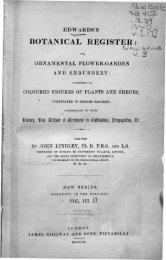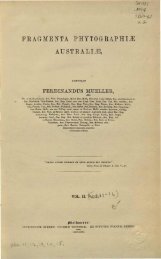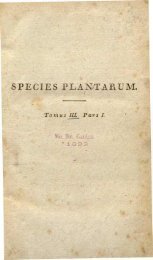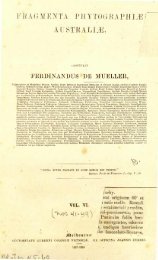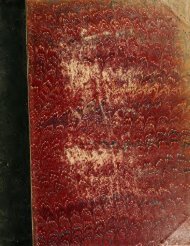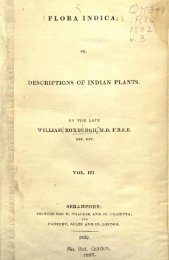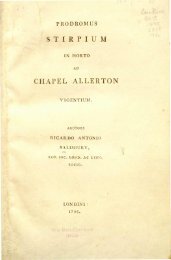Botanical Magazine 106 - 1880.pdf - hibiscus.org
Botanical Magazine 106 - 1880.pdf - hibiscus.org
Botanical Magazine 106 - 1880.pdf - hibiscus.org
You also want an ePaper? Increase the reach of your titles
YUMPU automatically turns print PDFs into web optimized ePapers that Google loves.
TAB. 6496.<br />
MORMODES OcANjs.<br />
Native of New Grenada.<br />
Nat. Ord. ORCHIDEE.•Tribe VANDE-E.<br />
Genus MOHMODES, Lindl.; (Reickb.in Walp. Ann. vol. vi. p. 577.)<br />
MORMODES Ocanm ; pseudobulbis oblongo-ellipsoideis basibus mombranaceis<br />
foliorum fere obtectis, foliis pedalibus lj-poll. litis elongato-Uno«plaÍM amini-<br />
natis, pedúnculo valido inclinato fusco-virescente, racemo 6-10-floro bracteis<br />
oblongis obtusis cymbiformibus, floribui lubfMoioul&tia aurantians punctis<br />
maculisve parvis iusco-sangniiH'iscreberrime utidiqui' irmratis, sepalis petalisque<br />
consimilibus lanceolatis acumitiatis, tabello longe unguiculato trilobo, lobis<br />
lateralibus brevibus oblongis obtusis intermedio majore subquadrato rostrato<br />
marginibus omnium recurvis.<br />
M. Ocanae, Lindl. and Reichb. f. mss. in Wulp. Ann. vol. vi. p. 577; Reichb. f.<br />
in Gard. Chron. 1879, p. 582 et 817, flg. 133, 134.<br />
Of the genus Mormodes seven species are now figured<br />
in this work; M. pardina (Tab. 3879 and 3900), M.<br />
Cartoni (Tab. 4214), M. lentiginosa (Tab. 4455), M. atro-<br />
purpúrea (Tab. 4577), M. Greenii (Tab. 5802), M. Colossus<br />
(Tab. 5840), and the subject of the present plate, all of them<br />
differing remarkably from M. Ocan•, both in the form of<br />
the perianth-segments and their colouring, but agreeing in<br />
the singular arrangement of the column, which is twisted<br />
one quarter round so as to bring the anther to face side-<br />
ways, and to afford a landing-place to insects close to or<br />
upon the anther itself. In M. Ocan• the slender beak<br />
of the column, to which the anther case is hinged, rests on<br />
the side of the mid-lobe of the lip, and when touched the<br />
whole anther with its broad strap and gland is released<br />
from the column with a jerk, and is, according to Dr.<br />
Reichenbacli, frequently tossed into the concavity of the lip<br />
itself ; for that learned author remarks (Gard. Ohron. 1. c.<br />
582) that the three lobes of the lip form as many bags, in<br />
one of which he always found a pollen-apparatus ; and he<br />
JUNE 1ST, 1880.




